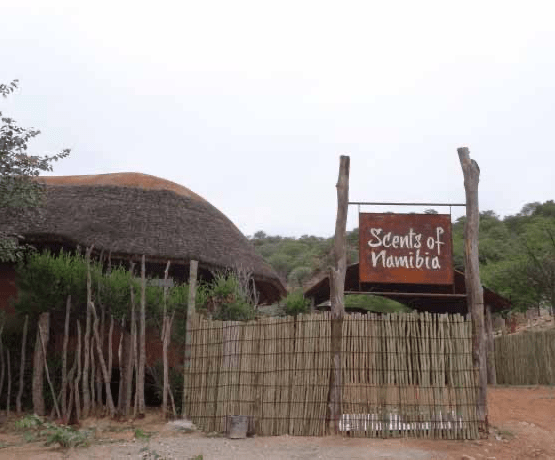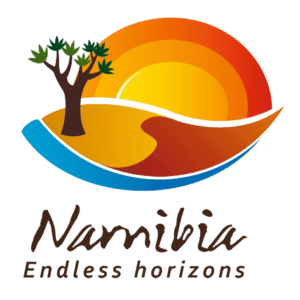Nord West Weg

Gesamtstrecke: 581km (einschließlich Umwege)
Vorgeschlagene Zeitspanne: 3-5 Tage
Diese Route verbindet das westliche Tor des spektakulären Etosha-Nationalparks und seine reiche Tierwelt mit einem weiteren namibischen Highlight, den beiden großen Wasserfällen am Kunene-Fluss.
Diese Route verbindet das westliche Tor des spektakulären Etosha-Nationalparks und seine reiche Tierwelt mit einem weiteren namibischen Highlight, den beiden großen Wasserfällen am Kunene-Fluss. Die Route durchquert das Mopani-Buschland und führt am Zaun des Etosha-Parks vorbei. Opuwo, das wichtigste Zentrum im Himba-Kernland, ist ein notwendiger Tank- und Versorgungsstopp. Die Stadt bietet einen großen Kontrast zwischen moderner und alter Tradition. Junge Leute in Jeans und T-Shirts laufen die staubigen Straßen entlang, neben traditionell gekleideten, ockerfarbenen Himba-Frauen, die Kupferarmreifen und Lederschmuck tragen.
Die gut ausgebaute Schotterstraße führt den Entdecker an Himba vorbei, die über die abgelegenen Straßen stapfen, um ihre Rinder, Ziegen und Esel zur nächsten Wasserquelle zu bringen. Der Epupa-Wasserfall ist eines der wirklich unberührten Naturwunder Afrikas. Die volle Wucht des mächtigen Kunene-Flusses stürzt in eine enge Schlucht, die Gischt in den blauen namibischen Himmel schickt.
Der Fluss und sein schnell fließendes Wasser beleben Menschen und Tiere, von denen viele weite Strecken zurücklegen, um sich zu erfrischen, Schatten zu finden und Schutz zu suchen. Ein Teil der Straße zwischen Swartbooisdrift und Ruacana verläuft entlang des Kunene-Flusses und bietet Blicke auf den Fluss durch den dichten Auwald. Eifrige Vogelbeobachter haben es auf einen kleinen Abschnitt des Flusses abgesehen, in dem der endemische Aschenbrödel zu Hause ist. Die Campingplätze und Lodges am Fluss liegen versteckt zwischen Makalani-Palmen am Flussufer.
Attraktionen:
Epupa Wasserfall
- Die Epupa-Fälle werden vom Kunene-Fluss an der Grenze zwischen Angola und Namibia gebildet. Der Fluss ist 0,5 Kilometer breit und fällt in einer Reihe von Wasserfällen über 1,5 km, wobei der größte einzelne Fall 37 m beträgt. Der Name 'Epupa' ist ein Herero-Wort für 'Schaum' und bezieht sich auf den Schaum, der durch das fallende Wasser entsteht. Die Wasserfälle sind ein wichtiger Anziehungspunkt für die Route und es gibt eine gut entwickelte lokale Tourismusindustrie.
Swartbooisdrift
- Swartbooisdrift ist eine kleine Siedlung am Ufer des Kunene-Flusses, an der Grenze zu Angola. Je nach Jahreszeit wird Swartbooisdrift von 150 bis 300 seminomadischen Menschen mit Himba- und Herero-Abstammung bewohnt. Die Siedlung ist nach Petrus Swartbooi benannt, einem der Stammeshäuptlinge der Swartbooi Nama, die das Gebiet in den 1890er Jahren überfielen. Es hat eine gewisse historische Bedeutung als der Ort, an dem die Dorsland Trekkers im Jahr 1881 den Kunene-Fluss überquerten, um nach Angola zu gelangen. Zum Gedenken an diese Wanderbewegung wurde das Dorsland Trekkers Monument auf einem Hügel außerhalb der Siedlung errichtet.
Dorsland Trek Gedenkstätte
- Im Kaokoland sind noch einige Ruinen von temporären Siedlungen zu sehen, darunter eine reformierte Kirche in der Nähe von Kaoko Otavi. Außerhalb von Swartbooisdrift können die Reisenden das Dorsland Trekkers Monument besuchen, das an die Reise erinnert.
Düfte von Namibia: Opuwo Verarbeitungsanlage und Besucherzentrum
- Diese Destillationsanlage für ätherische Öle befindet sich zu 100 % im Besitz der Gemeinde und wird von ihr betrieben. Sie destilliert Colophospermum mopane-Samen und Commiphora wildii-Harz - die traditionelle Himba-Parfümpflanze, die von den Einheimischen liebevoll als 'namibische Myrrhe' bezeichnet wird. Das Besucherzentrum fördert das gemeinschaftsbasierte Management natürlicher Ressourcen, die Traditionen des Himba-Volkes und ihre nachhaltigen Erntetechniken für einheimische Pflanzenprodukte.



